by Carrie-Ann Smith, Vice President, Audience Engagement
The Canadian Museum of Immigration at Pier 21 is a story museum. We collect and share the personal narratives of immigrants to Canada. We catalogue, contextualize, and curate. We may turn up the volume, but the voices are authentic.
Telling stories to inspire and instill empathy goes back to long before Pier 21 was declared a National Historic Site or anyone dreamed of its evolution into a national museum. Countless people contributed to positioning Pier 21 as a focal point for the history of immigration to Canada, but when we reflect on its beginning, the voices of four dynamic storytellers are heard above the rest.
The Storytellers
A veteran who became an immigration officer, a German-Canadian mother of six who championed multiculturalism, a Nova Scotian farm boy turned academic, and a little force of nature disguised as a grandmother. They are J.P. LeBlanc, Barbara Campbell, Dr. Jim Morrison and Ruth Goldbloom. They didn’t create the museum alone, but it wouldn’t have happened without them.
J.P. LeBlanc
The Pier 21 Society story starts in 1942 when a 21-year-old RCAF Flying Officer from St. Anselme, New Brunswick, marched through Pier 21 and onto the Queen Elizabeth, bound for service in Europe. After flying thirty-two missions and marrying his British war bride, he returned to Canada, retracing his steps through Pier 21.
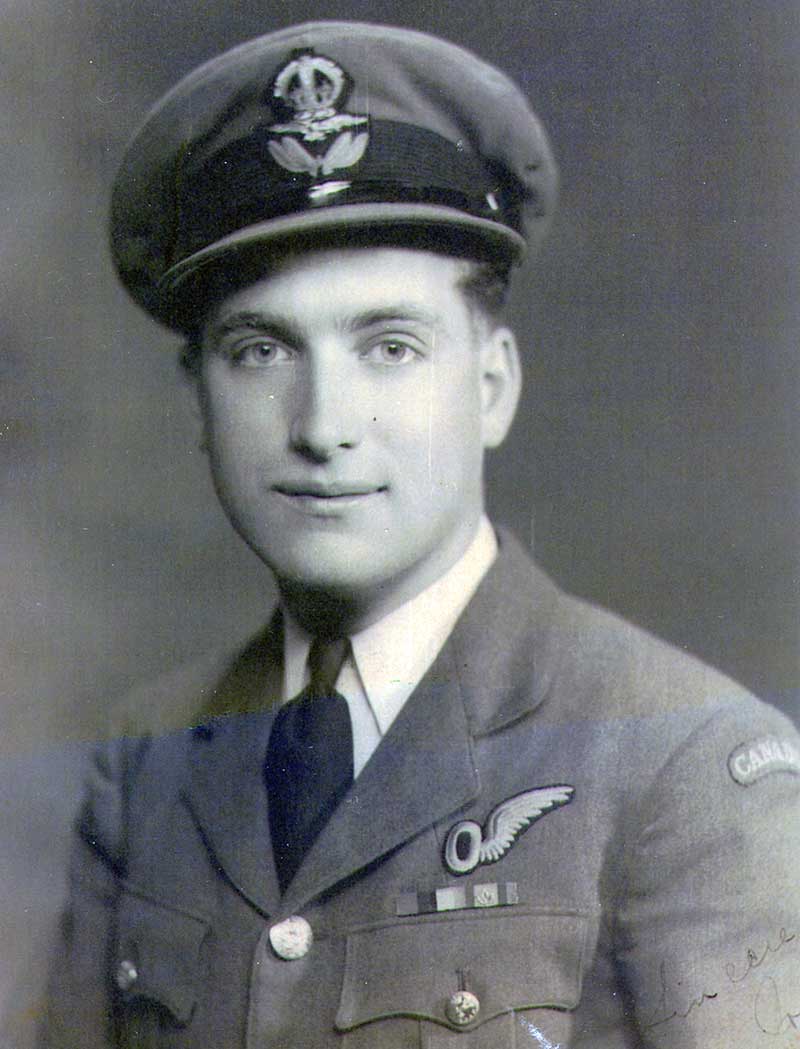
He later became an immigration officer, working throughout the country during the post-war decades that were the heyday of Pier 21.
By 1971 the Pier 21 immigration facility had closed its doors. Later that decade J.P. LeBlanc, by then Director General Nova Scotia Region, Employment and Immigration Canada, was asked to close out the Halifax waterfront chapter of Canadian immigration by penning an official report on the history of the site.
It was called The Pier 21 Story and writing it was a labour of love for J.P. Its final passage demonstrates his affection for the site, an affection that led him to later expand the report into a full-length book and, eventually, to found the Pier 21 Society.
"…many people would say that with the closing of Pier 21 a chapter of Canadian life was finished. Gone, apparently forever, was the excitement, the challenge, the exhilaration, of dealing with hundreds or even thousands of immigrants at once - people who had travelled for a week or more to reach Canada and who still had a train journey of days before them; people receiving their first impression of a vast, new country; people with special needs and unique problems; people who at Pier 21 were for almost 50 years met, examined, fed, nursed, sometimes housed, assisted with loans, married, even occasionally buried. Pier 21 was in many ways a bustling self-sufficient village hidden within the vast anonymous-looking transit shed and the people who worked there will never forget it."
In 1988, J.P. and Trudy Duivenvoorden Mitic, herself the daughter of Dutch immigrants, co-wrote the book Pier 21: The Gateway that Changed Canada. With the story preserved in print, J.P. then turned his thoughts to an Historic Sites and Monuments Board plaque at Pier 21. It was with this modest ambition that he founded the Pier 21 Society.
Barbara Campbell
First among the new Society’s enthusiastic members was J.P.’s good friend, Barbara Campbell. Born and raised in Germany, Barbara married a Canadian serviceman and sailed to Pier 21 with her husband and one-year-old daughter in December of 1957. In her 1995 immigration story, one of the very first donated to the Society, she wrote, “I placed all my trust in the hands of my husband, the people of Canada and God when I boarded the ship.” [S2012.222.1] They settled in Halifax. Barbara learned English and had five more children. She obtained a degree in social anthropology from Dalhousie University and a degree in political science from Saint Mary’s University. She modeled, worked in the fashion industry, was active in the German-Canadian community, and reigned as a table tennis champion. One of Barbara’s passions was the emerging multicultural movement. Around the time that J.P. and Trudy Duivenvoorden Mitic were starting work on their Pier 21 book, Barbara was founding the Multicultural Association of Nova Scotia.
Of her experiences as its executive director she wrote, “I am fortunate to meet people from every corner of the world; I hear their stories and I know of the contributions they have made to the building of this nation, Canada - my new home.” [S2012.222.1] In 1985 she and her team had organized Halifax’s first multicultural festival. Barbara was the perfect person to help J.P. tell the city’s ethno-cultural clubs and societies about the historic role of Pier 21, and to start collecting the memories of those who had passed through it.
Jim Morrison
By the mid-90s, the Multicultural Association of Nova Scotia also had a board member who had compiled an annotated bibliography of the ethnic groups in Nova Scotia. An historian at Saint Mary’s University, with a PhD in oral history, Dr. Jim Morrison was a perfect addition to the growing Society.
Raised on the family farm in Economy, Nova Scotia, Jim Morrison had been a student athlete and outstanding scholar who had obtained his doctorate on a Commonwealth Scholarship from the University of Ibadan, Nigeria. Always concerned with the plight of under-represented groups in Canada, Jim had earlier in life served as a Frontier College teacher for new Canadians. Volunteering with the Pier 21 Society was a perfect fit with his twin passions for oral history and ethno-cultural studies.
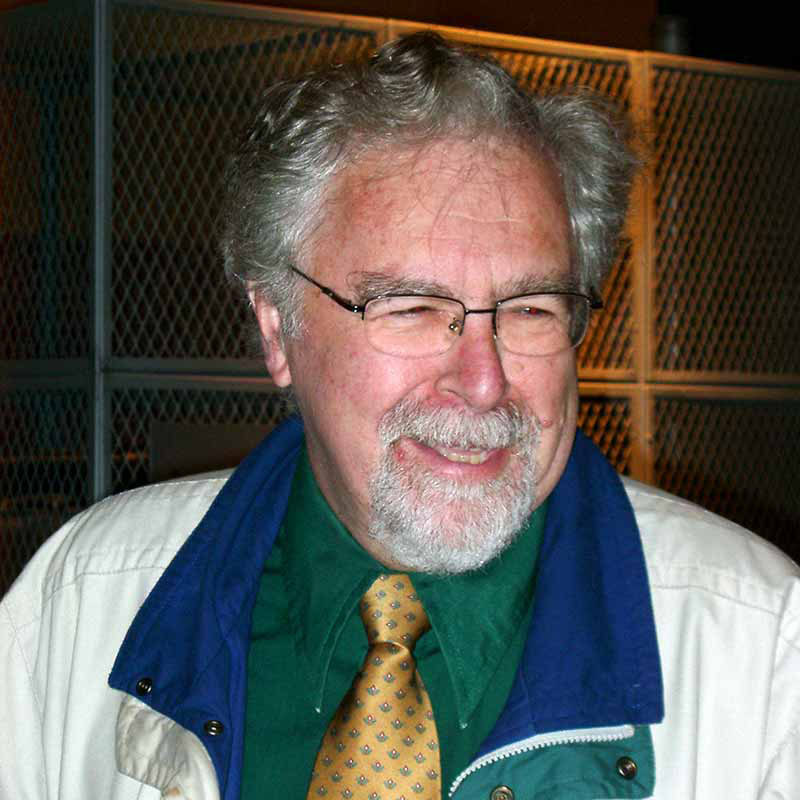
Jim offered a two-day oral history workshop for those interested in the effort to obtain Pier 21 a National Historic Sites and Monuments Board plaque, and, ideally, to have it declared a national historic site. During the workshop Jim stressed the value of memory and authentic voices. He explained the potential of oral history to inform the Pier 21 project, whatever form it ended up taking.
Ruth Goldbloom
J.P. had been forced in the early 1990s to step back from leadership of the Society due to a devastating bone cancer diagnosis.
While he would remain on the board of directors, the Society would need a new leader. J.P. remembered having heard an inspiring convocation speaker whose theme was that we, as a nation, had never thanked the immigrants who had helped build the country. Her name was Ruth M. Goldbloom.
The Society didn’t know it when Ruth assumed the helm, but a plaque and national historic site status would be just the jumping-off point for her boundless energy and enthusiasm. Ruth wouldn’t rest until Pier 21 was a year-round interpretive centre celebrating Canada’s past, present and future immigrants.
She led the Society’s board of directors in a feasibility study, and then a business plan. After a great deal of work promoting the idea of a revitalized Pier 21, in 1995, on the last day of the Halifax G-7 Summit, Prime Minister Jean Chretien announced that the legacy gift to the host city would be a 4.5 million dollar pledge towards the re-opening of Pier 21. This gift also came with a challenge that the Society raise 4.5 million dollars in matching funds. A National Advisory Committee and Atlantic Committee were struck. Ruth, the board members and these committees began telling the story of Pier 21 and the people who passed through it in boardrooms, community centres and kitchens across the country.
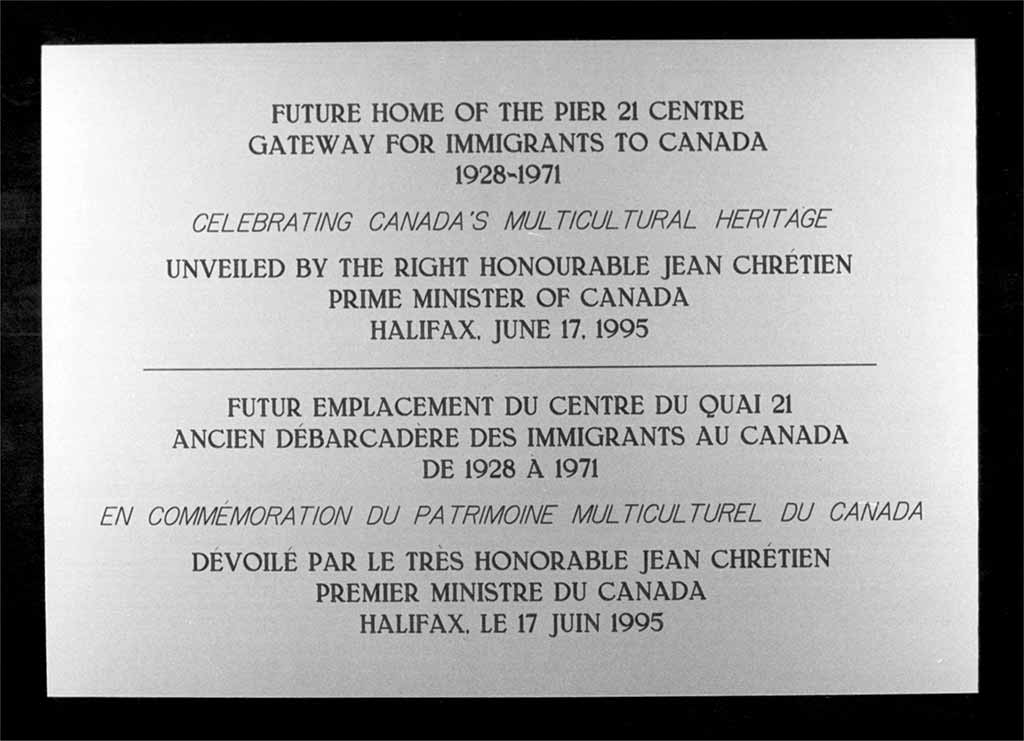
In May of 1997 they launched a national fundraising campaign. I like to say that Ruth asked seven million people for one dollar each because later in our story she asks seven people for one million dollars each. What really happened is that she and the board raised 4.5 million dollars through a combination of private sponsorship, corporate donations and individual gifts of all sizes from supporters across the country. The Halifax and Dartmouth War Bride Association has the proud distinction of having written the very first cheque.
I come into the story in August of 1998. By that time the board of the Society had been given free office space in downtown Halifax. They had a website, an architect had been engaged, and exhibition designers had been hired. The Society had partnered with Library and Archives Canada to build a name-searchable database of a million immigration records (1925 to 1935) and I was lucky enough to get one of 12, six-month data entry contracts. It sounds boring but imagining the personal stories behind the records was, and continues to be, oddly addictive.
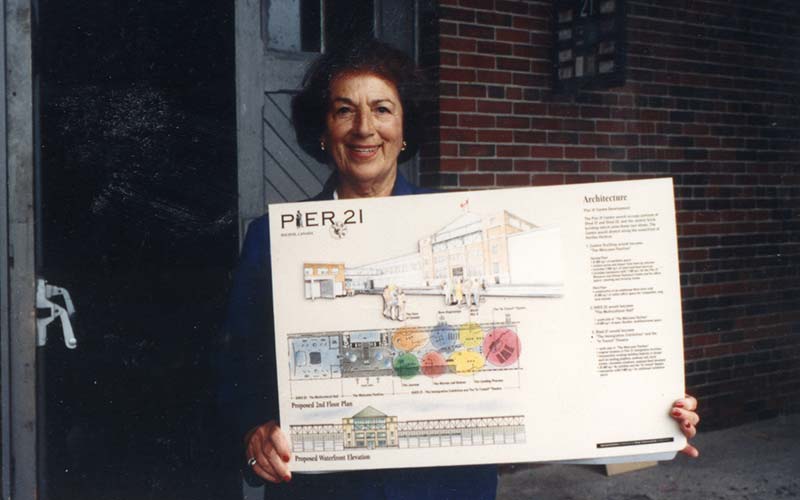
The Storytellers’ Dream Becomes Reality
In November of 1998 work on the site began and the management team was being built. By the spring we moved into Pier 21 to set up the offices, library, gift shop and café in preparation for opening day on July 1, 1999.
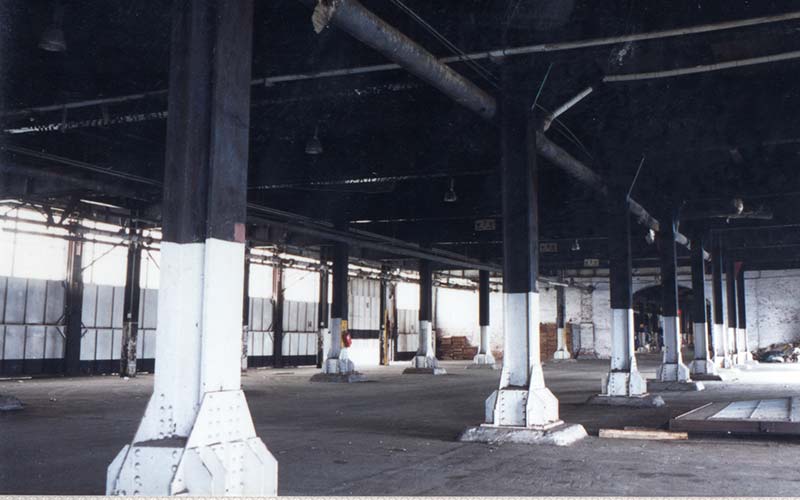
By virtue of being the only person who didn’t have a specific job to do the day before the grand opening, I had the privilege of accompanying J.P. the first time that he saw the exhibition. It was moving to watch him see his dream realized, and even exceeded. Later that day he, Barbara, Jim, Ruth and the full board of directors hosted donors at a luncheon featuring a keynote speech by Rosalie Silberman Abella.
Born in a Displaced Person's camp in Stuttgart, Germany on July 1, 1946, it was Justice Abella’s birthday and she told those who had gathered,
"I cannot imagine a better birthday present than this chance to come back and say "Thank you" to the Pier I last saw as a four year-old Jewish refugee, and to the country that took it from there. This country is full of tenaciously grateful immigrants and their descendants who bloomed in Canada’s field of opportunities, nourished by its generosity and strengthened by its idealism. This triumphal triumvirate of opportunity, generosity and idealism is what this Pier stands for, Canada’s best self. It is the Canada that let us in, the Canada that took one generation’s European horror story and turned it into another generation’s Canadian fairytale.I will never forget how lucky we were to be able to come to Canada, but I will also never forget why we came. These are the two stories which complete me - one joyful and one painful - and which merge in the next generation into a mother’s irrevocable gratitude to a country which has made it possible for her children to have only one story - the joyful story, the Canadian story, the story that started at Pier 21.”
[S2012.268.1]
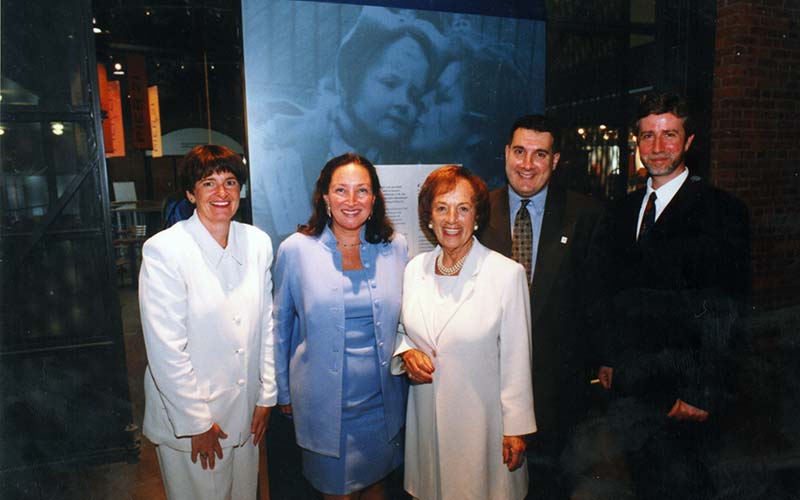
The next day started, as Canada Day at Pier 21 has started ever since, with a citizenship ceremony. Then, thanks to the efforts of British-born Society board member Vice Admiral Duncan ‘Dusty’ Miller, the HMCS Preserver sailed up to Pier 21. The Royal Canadian Navy had invited war brides aboard to re-enact their arrivals, each bride came down the gangplank beaming on the arm of a sailor in period uniform.

CBC television broadcast the opening ceremonies hosted by their own Hanna Gartner, who, like Rosalie Silberman Abella, first entered Pier 21 as the child of displaced persons after the Second World War. The celebrations included performances by local choirs and Pier 21 alumni including Will Miller of the Irish Rovers. Lennie Gallant had co-written a theme song for Pier 21 with fellow Canadian musicians Connie Klador, James Keelaghan, Michelle Campagne and Asif Illyas, who were all on hand to perform it. Prime Minister Jean Chretien congratulated the Society via satellite and promised to visit, which he did six weeks later for the National Historic Sites and Monuments Board Ceremony declaring Pier 21 a National Historic Site.
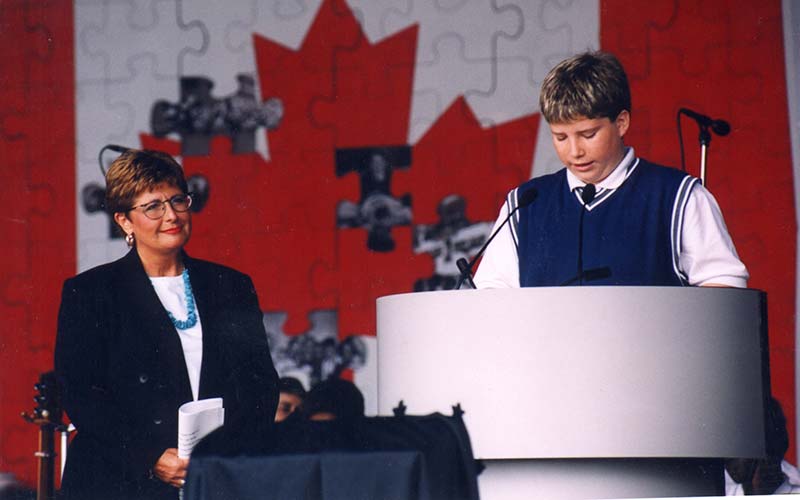
Opening day was a proud time for Ruth who welcomed thousands of people as if they were entering her home. In a way they were, over the years more than one person would call the site ‘the house that Ruth built’. Her efforts earned her awards and more attention than she ever anticipated or wanted, but she was always gracious and self-effacing.
Ruth told a lot of jokes and stories but this one, retold in her June 2011 oral history interview, is the essence of who she was and how she was, “…As a little girl, I saw in a grocery store a bulletin board, handwritten which said, ‘Lost: brown and white puppy, left ear missing, hind leg broken, badly reset, no tail, recently castrated. Answers to the name of Lucky.’ And that’s how I feel about Pier 21. I am the luckiest person in the world to have been involved and to be involved with Pier 21… It says how I feel about Pier 21, how privileged I feel to have been involved in Pier 21. I really do…”
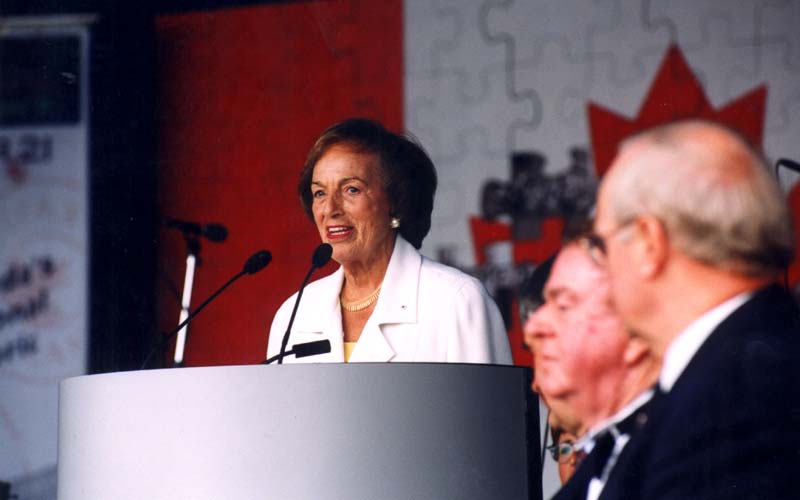
In the summer of 1999 there were seven full-time employees and over a hundred volunteers. Once the Site was up and running Ruth stepped down as Chair of the Board, and Board member Sherry Porter assumed that role, bringing with her years of corporate and board leadership expertise. Ruth remained on the board and maintained an office at Pier 21, continuing to share her gifts as a fundraiser and speaker.
Ruth set a corporate culture that included a rule against ever saying the word no. If we couldn’t do something, we located and introduced someone who could. If we didn’t know something, we knew where the answer would be. Ruth’s legacy of treating visitors like guests in her home extended to the elevator, which she insisted was for ‘company’, requiring that staff members always hit the ground button before getting off so that the elevator would be there for any newly-arrived visitors. To this day many of us still hear her voice in our heads, and always hit that ground button.
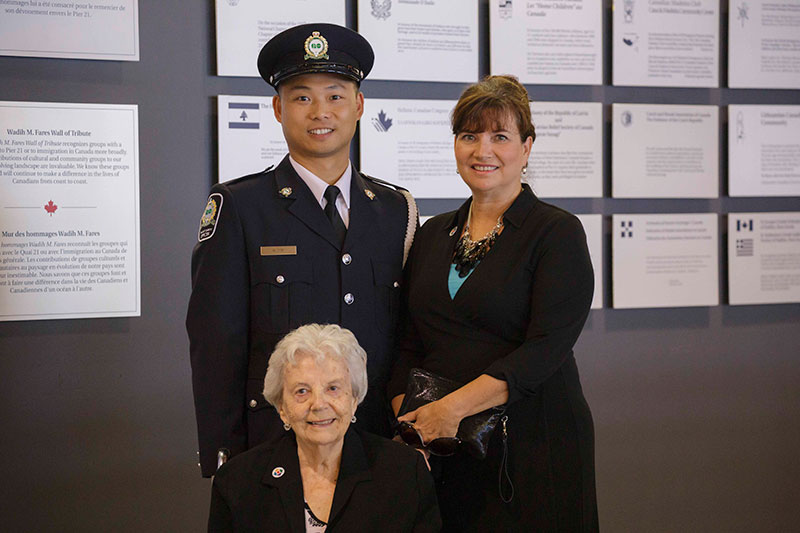
We lost the first of our storytellers on the evening of Saturday, January 26, 2002 when J.P. LeBlanc died. We stayed friends with his wife Trudy, who joined us for war bride events over the years. She and their daughter Jan honoured J.P.’s memory by joining us at the formal re-opening of the Canadian Museum of Immigration at Pier 21 on June 25, 2015. In the intervening years there would be many great days for our museum, and also some unexpected challenges.
To this day we are tenants of the Halifax Port Authority. By 2004, the combination of salaries, rent, heat, and electricity had become a serious challenge. Our National Historic Site status didn’t come with any funding, so while the board focussed on strategic planning, Ruth decided to set up a foundation to raise money for a museum endowment that would be a safety net. She decided to ask seven people for one million dollars each, these people would be called Nation Builders.
When she had the first six Nation Builders, her friends chipped in and made her the seventh, giving us the sought-after and much-needed endowment. Possessing those funds helped make the site more appealing to the federal government when conversations began about expanding the mandate and having Pier 21 join the family of national museums. On November 2, 2009, the Museum honoured the Nation Builders at a special dedication ceremony at the newly-created Nation Builder Plaza in front of the Museum.
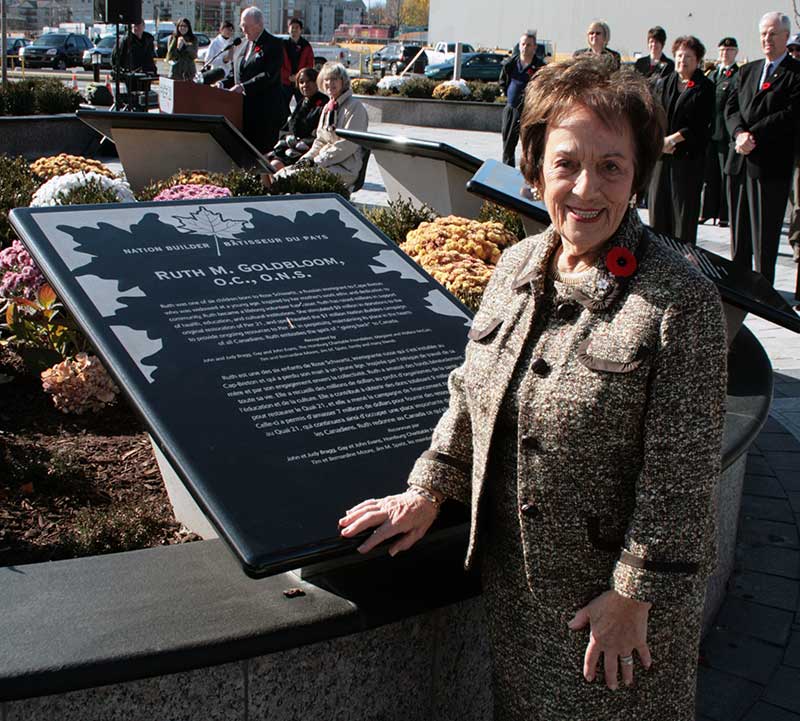
Just over a year later we would have another very big day. On November 25, 2010, the legislation creating the Canadian Museum of Immigration at Pier 21 came into effect. The amendments to the Museums Act established the Museum’s mandate as follows: The purpose of the Canadian Museum of Immigration at Pier 21 is to explore the theme of immigration to Canada in order to enhance public understanding of the experiences of immigrants as they arrived in Canada, of the vital role immigration has played in the building of Canada and of the contributions of immigrants to Canada’s culture, economy and way of life.
For Barbara, Jim, Ruth and all those who had joined the board in the ensuing years it was the realization of a dream and the reward for their vision and hard work. Of special note are the amazing Society board chairs who followed Ruth, keeping the doors open and guiding us to create collections, programs and partnerships strong enough to convince the federal government that the institution could take on a broader mandate while maintaining its authentic and collaborative approach to sharing Canada’s immigration stories.
Former Pier 21 Society Board Chairs and champions of the Museum
- Sherry Porter, Chair: 1999-2003
- Joe O’Brien, Chair: 2003-2005
- Robbie Shaw, Chair: 2005-2007
- Wadih M. Fares, Chair: 2007-2009
- John Oliver, Chair: 2009-2010
The collections were expanding and renovations to the physical site were well under way when Ruth Goldbloom O.C., O.N.S., as she was by then, joined us for the Canada Day 2012 citizenship ceremony. She was beaming. It was the last time we saw her. The most passionate, energetic, inspiring person that most of us had ever met died on August 29th, 2012.
Barbara Campbell died just a month and a half later.
Dr. Jim Morrison O.C. is very well and continues to mentor the historians and oral historians at the museum.
The past chairs and former board members helped the staff and volunteers through the transition and continue to be friends and supporters, joining us regularly for special events. If you asked them why they keep coming back they would give different answers but at the heart of their responses would be a single truth—they come for the stories—and thanks to all of them there will always be a place to tell them. Thanks to them, there will always be a Pier 21.